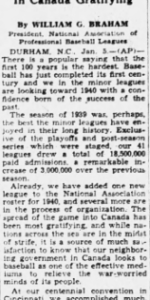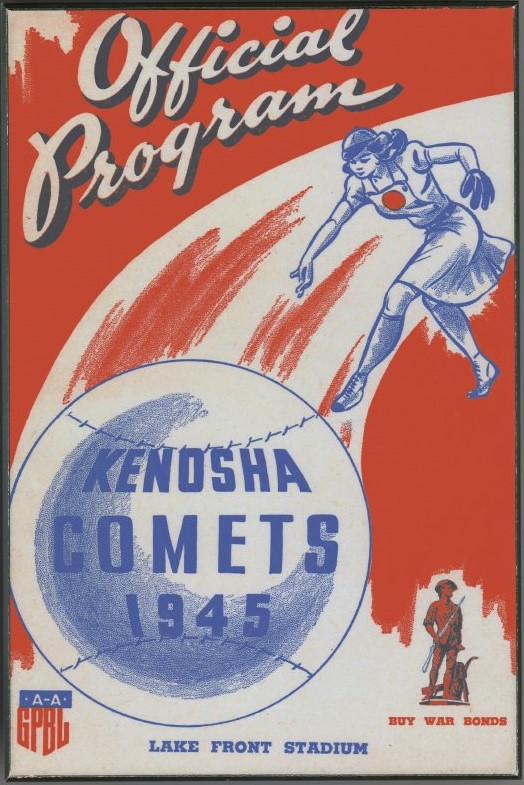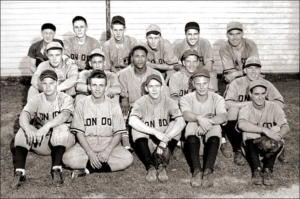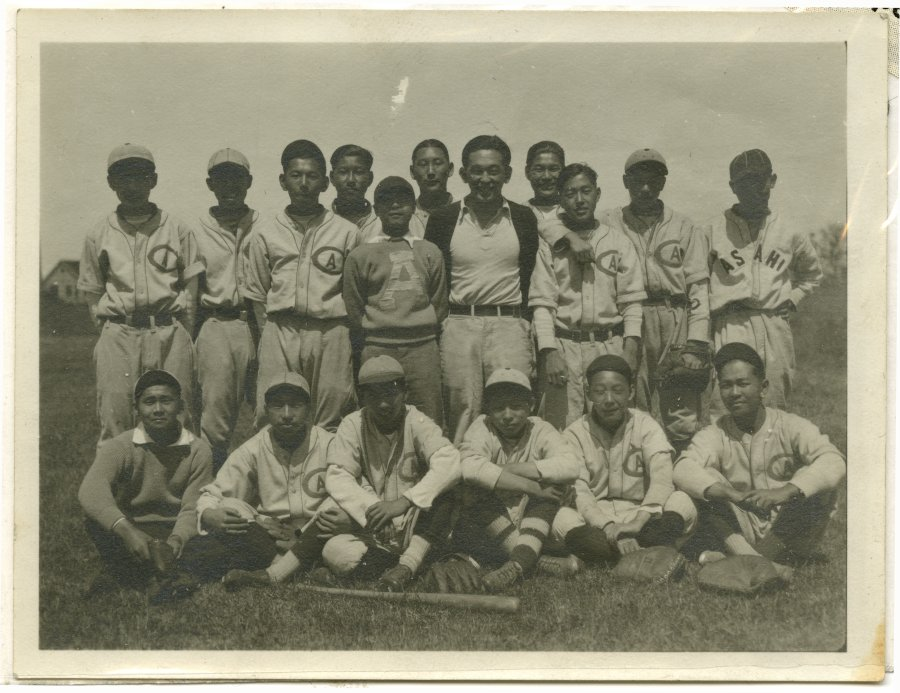
Faced with the homefront struggles of war – food and supply rationing, women having to take over the workforce, increased industrial workloads, social division (e.g. internment of Japanese-Canadians, see Asahi de Vancouver), and the never-ending worries for the loved ones sent overseas – many Canadians used the game of baseball to escape their hardships and realities for nine innings.
When the war got underway, there were recreational and amateur baseball/softball leagues throughout the country, varying in skill, age, and gender. Youth baseball, made up of both school leagues, and municipal leagues offered children and teens the opportunity to remain engaged in sport, which was nearly halted altogether in wartime. While baseball had undeniable benefits for players, the game also allowed spectators a distraction, especially in the case of parents who may have had children and/or spouses serving abroad. Baseball provided a positive outlet for many people, and it became an essential wartime activity for both physical fitness and morale.
Ladies softball, which had grown significantly since the start of the war, soon featured many leagues across the country, including the Greater Winnipeg Senior Girls Softball League, the Regina-Moose Jaw Intercity League, and the Professional Women’s Softball Association of Ontario (which had been competing since 1931, and expanded with demand in 1943 at the height of WWII). Regional championships (e.g. the Western Championship), World Championships and cross-border barnstorming tours (a tour involving games against American softball teams) showcased the best that Canadian women’s softball had to offer. Dozens of women would be scouted from these leagues and competitions for the All-American Girls Professional Baseball League (click en cliquant ici to visit the inductee page for the Canadian members of the AAGPBL or read the story of Helen and Marge Callahan in the stories section of the exhibit).
While professional baseball within Canada during the Second World War was completely unmatched with the American Major League, professional and semi-professional baseball existed within Canada, and would produce many successful ball players, some of which went on to play in the Major Leagues. The Canadian-American League (Can-Am League for short), was one of these Canadian wartime leagues. The Can-Am League had been founded in 1936 and struggled through the late-30s until cementing itself as a successful league right as the war broke out. Formed of a mix of Upstate-New York and Ontario/Québec teams, the league was at the height of its popularity in 1939 when the world plunged into war.
The Québec Provincial League ran between 1938 and 1940, consisting of seven teams from the region between Montréal and Québec City. While it was only a short-lived league, with three teams folding before the end of the 1940 season, 34 players who played for Provincial League teams had either already played, or would go on to play, Major League Baseball. Two of the league’s teams, Québec City and Trois-Rivières, would continue on in the Can-Am League beginning in 1941.
Several smaller leagues also existed across Canada through the war, such as the Intercounty Baseball League (IBL) in Southwestern Ontario (which still operates today despite enduring the same stresses of war as any other league). The IBL adapted to wartime by combining their junior and senior divisions, temporarily being renamed the Intercounty Wartime Major League for the 1944 season.
By far the most popular and successful professional baseball scene across all of Canada throughout the Second World War was the Class AA International League (IL). The league was the host to the Toronto Maple Leafs, the AA affiliate of the Philadelphia Athletics (1940-42, 19445-46) and Pittsburgh Pirates (1942-44) of the Major Leagues, and the Montréal Royals, the Brooklyn Dodgers’ affiliate. The Maple Leafs played out of Maple Leaf Stadium along the Toronto Waterfront, while the Royals played in historic Delorimier Stadium in Montréal. The two teams combined to produce countless Major Leaguers who played in the IL during WWII, such as Duke Snider (1926-2011, CA, USA), or managers like Burleigh Grimes (1893-1985, WI, USA), who led the Maple Leafs to a league pennant in 1943. The league was bursting with success, even though it was equally impacted by the War. In 1946 after the war had ended, it was designated a Class AAA league, and legendary players such as Jackie Robinson and Roberto Clemente got their professional beginnings in the International League, both with the Brooklyn Dodgers affiliate Montréal Royals.
While many teams experienced various hardships during the war years, the Vancouver Asahi had a much different wartime experience. The Asahi were a brilliant baseball team who had been founded in 1914 as a team of Japanese Canadians. They experienced tremendous success until 1941, when Pearl Harbour was attacked by the Japanese on December 7, 1941. Japanese Canadians were interned in prison camps, and the Asahi were forced to disband. As individuals those players took baseball into the internment camps and taught others how to play. Baseball became a lifeline to their old lives, and as the players faced off against first other inmates, then guards, then locals, the game became a way of bridging divides. To read more about the Vancouver Asahi, please visit the Virtual Exhibition from 2023 en cliquant ici, or visit their induction page from 2003 en cliquant ici.


















